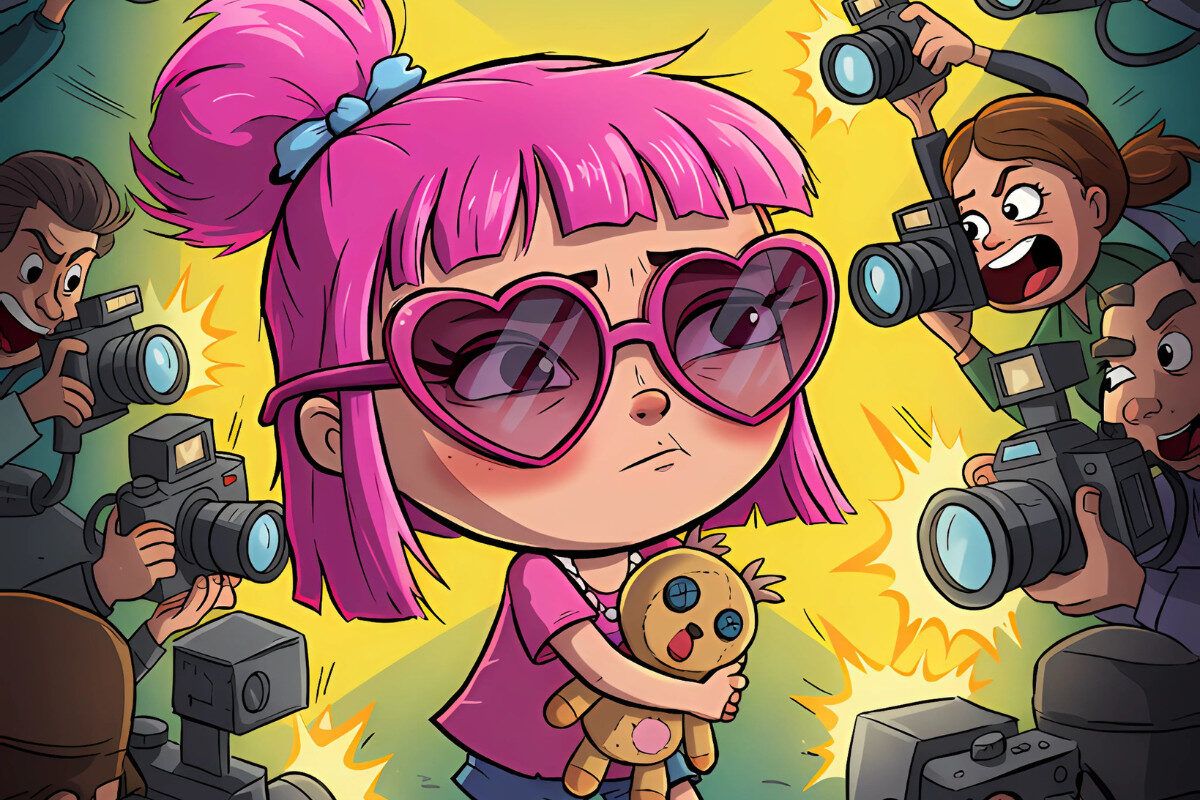Hitting 100 million subscribers on YouTube is no small feat. It’s something only a handful of creators and brands have ever managed.
You’ve got your usual suspects — MrBeast, PewDiePie — but dig a little deeper and you’ll find something unexpected.
A surprising number of the biggest channels on YouTube aren’t run by solo creators or massive brands.
They’re child-focused — and in many cases, child-fronted.
These channels dominate YouTube Kids, a platform that’s become a weirdly profitable corner of the internet.
In fact, around 60% of the channels that have passed 100 million subscribers (the data’s below) are kids’ channels.
And if you’re a parent, chances are you already know where this is going.
These aren’t just harmless cartoons or toy reviews. Many of these channels feature real children, often under 10, starring in heavily scripted content, opening toys, reenacting skits, or just being filmed nonstop by their parents.
They rake in billions of views and millions of dollars. But at what cost?
When the star of your billion-dollar media empire is a seven-year-old, it raises real questions about consent, privacy, and exploitation.
And while YouTube does have rules to protect kids, the lines get blurry when the platform itself is driving this kind of content to the top.
Here’s All The Current YouTube Channels With 100+ Million Subscribers
| Rank | Channel | About | Videos | Subscribers | Views | Projected Yearly Earnings |
|---|---|---|---|---|---|---|
| #1 |
More Info
Known for high-budget stunts, challenges, and philanthropy.
|
859 | 383M | 78.32B | $50M – $80M+ | |
| #2 |
More Info
Indian music record label and film production company.
|
23.1K | 290M | 291.9B | $30M – $60M | |
| #3 |
More Info
Animated nursery rhymes and children’s songs.
|
1.49K | 191M | 199.81B | $25M – $50M | |
| #4 |
More Info
Indian television entertainment channel.
|
153.63K | 183M | 176.22B | $20M – $40M | |
| #5 |
More Info
Children’s entertainment featuring two brothers.
|
880 | 137M | 105.04B | $15M – $35M | |
| #6 |
More Info
Children’s entertainment featuring Diana.
|
1.33K | 133M | 113.33B | $15M – $35M | |
| #7 |
More Info
Children’s entertainment featuring Anastasia.
|
935 | 127M | 111.38B | $15M – $35M | |
| #8 |
More Info
Comedy and prank videos by twin brothers.
|
356 | 121M | 20.78B | $5M – $15M | |
| #9 |
More Info
Indian music record label.
|
13.88K | 116M | 76.34B | $10M – $25M | |
| #10 |
More Info
Gaming commentary and entertainment.
|
4.81K | 110M | 29.52B | $5M – $15M | |
| #11 |
More Info
Professional wrestling entertainment.
|
83.53K | 108M | 93.11B | $10M – $25M | |
| #12 |
More Info
Indian movie channel.
|
10.28K | 104M | 29.81B | $5M – $15M | |
| #13 |
More Info
Indian comedy and family entertainment channel.
|
97.61K | 100M | 127.73B | $10M – $25M |
📈 Key Trends in Channel Growth
1. Kids Content Dominates — In Reach and Revenue
- 11 of the top 20 channels are either dedicated to children’s entertainment or music aimed at young kids.
- Cocomelon, Vlad and Niki, Kids Diana Show, Like Nastya, and ChuChu TV collectively hold over 675 million subscribers and nearly 600 billion views.
- Estimated annual earnings for these channels often sit in the $15M–$35M range, despite relatively modest video output.
2. Indian Channels Lead in Views
- India-based channels (like T-Series, SET India, Zee Music Company, and Sony SAB) dominate in terms of total views and output volume.
- T-Series alone has 291.9 billion views, almost 4x more than MrBeast, and produces 23.1K videos — that’s 26x more content than the top-ranked MrBeast.
- Collectively, Indian channels in the top 50 account for over 1.2 trillion views.
3. Short-Form and Entertainment Content Skyrockets
- Comedy, pranks, and short-form entertainment from creators like Stokes Twins, Alan’s Universe, and Shorts Break attract younger audiences and mobile users.
- These formats have become more dominant as YouTube Shorts adoption increases globally.
4. Music Channels Maintain Global Relevance
- Music-related channels (both official and label-backed) still pull massive numbers.
- BLACKPINK, Justin Bieber, Ed Sheeran, Billie Eilish, and Bad Bunny each exceed 30 billion views, with subscriber bases of 50M+.
- Music’s enduring appeal gives artists a steady stream of passive engagement and revenue.
Why Turning Your Kid Into a YouTube Star Probably Isn’t a Great Idea…
I know, I sound old. Fair enough. But regardless of where you land on internet fame, I think most people can agree: building a YouTube brand around a child feels ethically murky at best.
A five-year-old — even a ten-year-old — has zero concept of what it means to be “famous” at that scale. Let’s be honest, most adults struggle with that level of attention. And yet, some of these family-run channels pull in audiences in the tens of millions.
“Parents need to think very carefully about how the material they are filming is available for the world to see in perpetuity,” says Prof John Oates, a Senior Lecturer in the Child and Youth Studies Group at the Open University, and founder of the British Psychological Society’s Media Ethics Advisory Group (BPS).
“Some children are bullied simply because they’ve been shown on TV.” he says, “Footage of a child that might be fine aged two or three could be very distressing if it was available on the blogosphere when they were 12 or 13.”
The BPS’s list of potential harms – defined as “immediate or delayed, short-term or long-lasting effects” – is long.
“The first potential harm is simple emotional distress,” says Oates, “followed by harm to self-esteem, and a loss of a sense of autonomy.
“Mental fatigue is another problem,” continues Oates, “as well as an increase in a child’s generalised anxiety level, which could lead to general anxiety disorder.” GAD is a long-term psychological condition that causes an individual to feel anxious on a daily basis. It can lead to restlessness, panic attacks, or trouble concentrating and sleeping.
And it’s not just about what’s happening now. These kids could be dealing with the consequences of internet fame for the rest of their lives.
They didn’t ask for it, they don’t fully understand it, and they’re not equipped to navigate it. Consent, in this context, is fuzzy at best.
Sure, you could argue: it’s a free country, they’re making bank, and maybe I’m just bitter because a six-year-old has a bigger net worth than I ever will. And hey, maybe you’re right — there’s definitely big money in this stuff. But that doesn’t mean it’s right.
They’re still just kids. And as someone who has a couple of his own, I genuinely don’t think it’s wise — or ethical, or moral — to parade your child in front of a camera for clout and cash.
YouTube Kids is flooded with this kind of content: toddlers turned into full-blown brands, doing skits, unboxing toys, and starring in weird, overly polished family vlogs. And it’s… unsettling. Do you think a five-year-old really understands what it means to have millions of people watching them?
If you’ve never dipped into YouTube Kids, you might not even know how bizarre it is. But it’s there, and it’s full of parents essentially monetizing their children — making millions in the process — off the attention of other kids.
And yeah, it’s as strange as it sounds.


